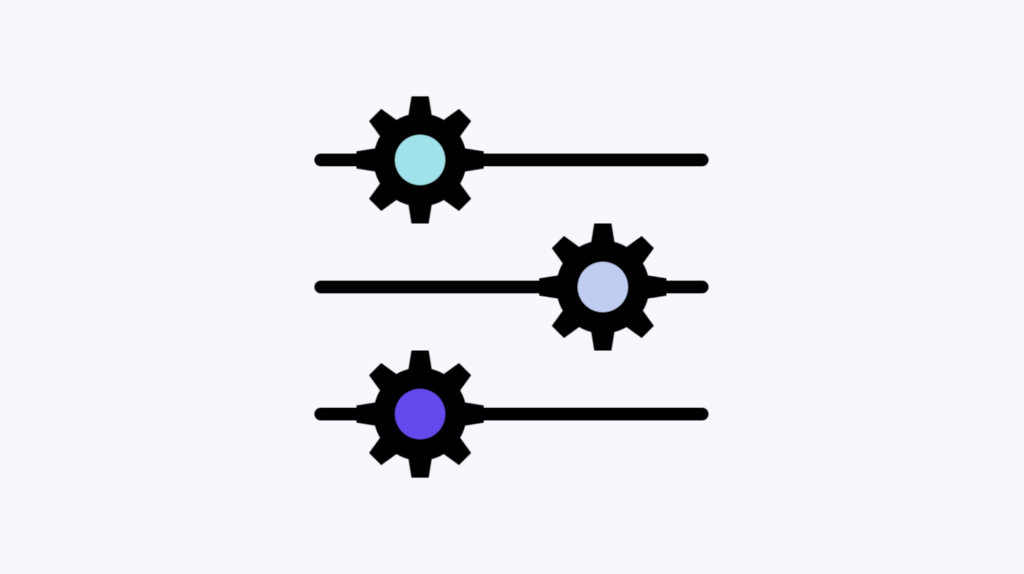Trendata’s search bar is a revolutionary tool designed to transform your data analysis experience. It fuses innovation and intuition, providing you with a powerful means to interact with your data, understand trends, and make accurate forecasts.
It’s more than just a search bar. It’s your gateway to a world of insights waiting to be discovered.
With its unique features, Trendata’s search bar simplifies your search query, allowing you to focus on what truly matters — deriving value from your data.
We’ll delve into the functionalities of Trendata’s search bar, revealing how its innovative features can revolutionize your data analysis journey.
Simplifying Search Parameters with Distinct Boxes
Trendata’s search bar is designed to simplify complex search parameters. Its innovative design, featuring distinct boxes for each search phrase, makes managing your searches not just straightforward, but intuitive.
When you type your search phrases into our search bar, they appear as straightforward text. However, once you hit enter or click out of the search bar, each phrase transforms into a distinct box. This means each part of your search term is visually separated from the others, making it easy to understand and manage your search parameters.
For example, if you’re searching for “monthly search volume of smartwatches in Massachusetts” each part of this phrase – “monthly,” “search volume,” “smartwatches,” and “Massachusetts” – would be enclosed in its own box when you click out of the search bar. This visual segregation helps you manage complex searches, making it easy to add, remove, or modify individual terms.
This feature is more than just a visual aid. It’s a tool designed to improve your data analysis experience. By separating each search term into its own box, you can clearly see which terms are included in your search, making it easier to understand the scope of your query.
While there may be a learning curve associated with this unique search bar, it’s worth noting that it’s one of the most powerful features in Trendata. As you grow accustomed to it, you’ll find your searching methods significantly improved, making your data analysis more efficient and precise.
Additionally, the distinct boxes allow for greater flexibility when managing your searches. Want to remove a specific term from your search? Simply click on the ‘x’ in the corresponding box. Need to add another term? Just type it into the search bar, and it will appear in its own box. Want to modify a term? Click on the box, make your changes, and hit enter. It’s that simple
In essence, the distinct boxes feature provides a visual representation of your search parameters, making it easier for you to manage them. It helps you avoid confusion, reduces the chance of errors, and ultimately, saves you time — all crucial factors when dealing with large amounts of data.
The Power of Measures, Attributes, and Filters in Search Results
Our search bar goes beyond simple keyword recognition. It’s equipped to identify your search columns as either attributes or measures, and your choice between the two can significantly impact your search results. With the addition of filters, you can refine your search even further, honing in on the specific data that truly matters.
Quantifying Your Search with Measures
Measures are numerical values that can be calculated or aggregated, represented in green in Trendata’s search bar. They provide the quantitative aspect of your data, offering crucial insights into trends and patterns.
Two of the most significant measures are ‘Search Volume’ and ‘Share of Search.’
- Search Volume
‘Search Volume’ refers to the number of times a particular keyword is searched within a specific time frame. It helps gauge the level of interest or demand for that keyword. By analyzing search volume, you can identify popular trends, understand market demands, and adjust your strategies accordingly. - Share of Search
‘Share of Search’ determines the proportion of total online searches a particular brand receives compared to all other brands in the same market. This measure gives you an idea of a brand’s popularity and visibility in the digital space. Analyzing the share of search can help you understand your brand’s position in the market and devise strategies to improve your presence.
Qualifying Your Search with Attributes
Attributes, represented in blue, describe the qualitative aspects of your data. They are essential for grouping, categorizing, and providing context to your data. Two important attributes are ‘Date’ and ‘State.’
- Date
The ‘Date’ attribute allows you to track changes over time, making it vital for trend identification and forecasting. The data within this variable consists of specific months, indicating a chronological sequence over the last 48 months and a forecast for the next 12 months. By analyzing data over different dates, you can identify patterns, accurately predict future trends, and make informed decisions. - State
‘State,’ as an attribute, organizes and categorizes data based on geographical regions. This enables region-specific analysis, allowing you to understand regional trends, compare performance across different regions, and tailor your strategies to specific geographical markets.
Refining Your Data with Filters
Filters are an integral part of refining your search results. They help narrow down data by only showing data that meet certain parameters. You can add a filter by clicking on the filter icon next to a measure or attribute in the data panel or by typing the value directly into the search bar. Both methods allow you to customize your search and focus on the data that is most relevant to your analysis.
Harnessing the Power of Trendata's Search Feature
Mastering the use of measures, attributes, and filters in Trendata’s search bar can transform your data analysis process. With this tool, you can delve deeper into trends, categorize data more effectively, and make more accurate predictions.
The beauty of Trendata’s advanced search bar lies in its ability to offer tailored analysis that meets your unique needs. You have the freedom to choose the right measures and attributes based on your objectives and apply relevant filters to customize your data analysis.
Whether you are trying to answer specific questions or address particular challenges, these features equip you to do so with confidence.
So why wait? Start exploring our search bar and see the difference they can make in your data analysis.




